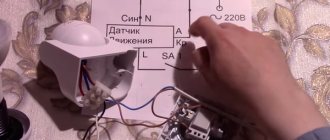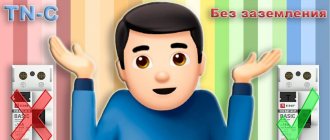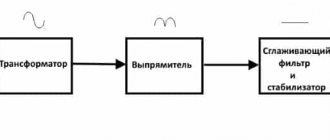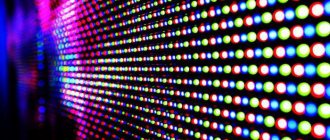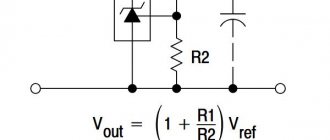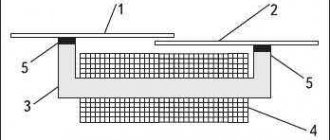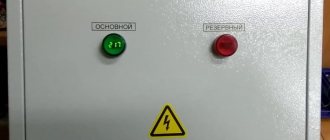Among the many dielectric materials, there are also those that have the so-called piezoelectric effect. Electrical charges may arise on their surface under the influence of deformation. There is also the opposite effect, when dielectrics begin to deform under the influence of an external electric field. The piezoelectric element itself cannot be considered a source of electricity. It just converts mechanical energy into electrical energy, with very low efficiency. However, due to their properties, piezoelements are widely used in technology, primarily as sources of electrical discharges.
Description and properties [edit | edit code ]
Piezoelectrics are crystals (piezocrystals) that have (endowed) the property of producing an electric charge when compressed (direct piezoelectric effect) or the inverse property of changing shape under the influence of electrical voltage: compressing/expanding, twisting, bending (inverse piezoelectric effect).
Piezoelectricity was discovered by the brothers Jacques and Pierre Curie in 1880-1881. [1]
Actuators - convert electrical energy into mechanical energy.
Sensors (sensors, generators), on the contrary, convert mechanical energy into electrical energy.
There are single-layer, double-layer and multilayer piezocrystals.
Single-layer - under the influence of electricity they change in width, length and thickness. If they are stretched or compressed, they generate electricity.
Double-layer - can be used as single-layer, can be bent or extended. "Flexors" create the greatest amount of movement relative to other types, and "expanders", being more elastic, develop much more force with much less movement.
Multilayer - develop the greatest force with minimal movement (change in shape).
Mechanism of action of the piezoelectric element
The basis here is a block of a piezoelectric element, which sends a pressure force from the button to the piezoelectric element itself. The main component of a piezoelectric element is a piezoelectric crystal. This is a plate cut from a quartz crystal. Its function is to convert mechanical deformation into electrical voltage. The plate is very hard, can withstand significant bending and compression and produce high voltage. When you gently press the crystal, the output voltage will be small, but it will be long-lasting. When you press the crystal with the same force, but quickly and instantly, the output voltage is stronger, but it will be instantaneous. Therefore, this property of the crystal is used to create a spark in a piezo lighter. To change the impact force from smooth to sharp, the lighter has a mechanism: an elastic spring, which is located under the piezo lighter button. By pressing the button, the spring is also compressed. After pressing the button all the way, the spring moves back the lever on which it rests. After this, the spring sharply straightens. At the other end of the spring there is a metal hammer, which, when the spring opens, strikes the crystal with great speed. On the back of the crystal there is a metal lining that prevents the crystal from moving due to the movement of the hammer. The result is an instant and strong impact on the crystal, which causes a spark. Piezoelectric element from a lighter: what can be done? Craftsmen have learned to use it in repairing (more precisely, in “killing”) smartphones or mobile phones. A logical question immediately arises: why would an individual with a healthy nervous system break his smartphone? The situation may vary. Someone wants to return the phone under warranty because he no longer likes it. Someone just decided to make fun of their friend.
Description and properties [edit | edit code ]
Piezoelectrics are crystals (piezocrystals) that have (endowed) the property of producing an electric charge when compressed (direct piezoelectric effect) or the inverse property of changing shape under the influence of electrical voltage: compressing/expanding, twisting, bending (inverse piezoelectric effect).
Piezoelectricity was discovered by the brothers Jacques and Pierre Curie in 1880-1881. [1]
Actuators - convert electrical energy into mechanical energy.
Sensors (sensors, generators), on the contrary, convert mechanical energy into electrical energy.
There are single-layer, double-layer and multilayer piezocrystals.
Single-layer - under the influence of electricity they change in width, length and thickness. If they are stretched or compressed, they generate electricity.
Double-layer - can be used as single-layer, can be bent or extended. "Flexors" create the greatest amount of movement relative to other types, and "expanders", being more elastic, develop much more force with much less movement.
Multilayer - develop the greatest force with minimal movement (change in shape).
History [edit | edit code]
In the 1950-1960s in the USSR, the All-Union Scientific Research Institute of Piezo-Optical Mineral Raw Materials, which published annual scientific works, was studying piezoelectricity.
Structurally, the piezoelectric element is a piezoceramic with applied electrodes. Piezoelements can be of various shapes: in the form of disks, rings, tubes, plates, spheres, etc. For vibrators and generators, piezoelements are combined into a piezoelectric stack to achieve better characteristics.
Piezoelectric effect
Piezoelectric substances ( piezoelectrics
), in particular piezoceramics, have the property that when deformed under the influence of external mechanical pressure, electrical charges arise on their surface.
This effect is called the direct piezoelectric effect
and was discovered in 1880 by the Curie brothers.
Soon after this (in 1881), the inverse piezoelectric effect
, namely, that a substance located between two electrodes reacts to an electrical voltage applied to it by changing its shape. The first effect is currently used for measurements, and the second is used to excite mechanical pressures, deformations and vibrations.
More detailed studies of the piezoelectric effect showed that it is explained by the property of the unit cell of the material structure. In this case, the unit cell is the smallest symmetrical unit of material, from which a microscopic crystal can be obtained by repeating it many times. It was shown that a necessary prerequisite for the appearance of the piezoelectric effect is the absence of a center of symmetry in the unit cell.
Principle of operation
The effect of the piezoelectric element is most clearly seen in the example of a push-action lighter. When you press a key, the lighter produces a series of sparks, which indicates the most successful use of a piezoelectric generator in this design. To imagine the principle of operation, it is recommended to consider the diagram of a simplified model of this device. It is made in the form of a support with a lever that creates a large force acting on the piezoelectric element.
The elements themselves are solid cylindrical structures, at the ends of which electrodes are located. They are in contact with each other, so they are subject to the same force. The orientation of each piezoelectric element to each other is made in such a way that the electrodes of the contacting surfaces have one charge, for example, positive, and the opposite ends have a charge with a different sign. The connection order must be followed, especially when making such a device with your own hands.
Under the action of the lever, the electrodes close, and an electrical parallel connection of each piezoelectric element occurs. From the point of contact, a current conductor with a rounded tip is removed, located from the metal base at a certain distance. When the lever is pressed, the air gap between the base and the tip is pierced by an electric spark. Now it’s clear how such a lighter works. With further pressing, the force increases, which leads to the appearance of a second and subsequent sparks. This will happen until the piezoelements are completely destroyed.
Properties of piezoceramics
The relationship between the applied force and the resulting response of the piezoelectric element depends on: the piezoelectric properties of the piezoelectric ceramic, the size and shape of the sample, and the direction of electrical and mechanical excitation.
By their nature, piezoelectric materials are anisotropic crystals. Figure 3 shows the different directions and orientation axes of the piezoelectric material. Axes 1, 2 and 3 are the corresponding analogues of the X, Y, Z axes of the classical orthogonal coordinate system, while axes 4, 5, and 6 define the axes of rotation. The direction of axis 3 is the polarization direction [1]. This direction is established during production by means of a high constant voltage that is created between the electrodes.
and , (1)
The superscript shows the boundary conditions acting on the material in the process of determining the value of the relative dielectric constant. In particular, the index T (in this case) indicates that the dielectric constant is measured on a free (not clamped) sample [3]. And the index S shows that measurements take place under constant deformation of the piezoceramics (in a clamped state). The first subscript shows the direction of the dielectric displacement, and the second – the electric field [1]. The formula for calculating the relative dielectric constant is as follows:
, (2)
- where is the dielectric constant (one of two or ), F/m
- t
– distance between electrodes, m, - S
– electrode area, m2, - C
– capacity, F
Piezoelectric Electrical Power Generator
Until recently, the excitement in the world regarding the creation of piezoelectric energy sources was not characterized by a high level of inventive proposals. For example, Israeli scientists propose installing piezoelectric elements in the road surface and using the energy of passing cars. In Japan, the floor of one of the subway halls is covered with piezoelectric elements. These and similar voltage generator projects do not stand up to criticism from an economic point of view. The reason is this. One click of an electric lighter, which lasts approximately 0.1 nanoseconds, releases more than 2 megawatts of power. That is, the power per second is 0.2 watts. If you could make 1000 clicks per second, you would get 200 watts of power. The power is great, but how to make 1000 clicks per second. This is impossible, but it is possible to press a piezoelectric element onto a smooth rotating wheel 20 or more thousand times, exciting ultrasonic vibrations in it. This is at least proven by the figure below (Fig. 1). Thirty watts of power taken from the piezoelectric element (watts per gram of piezoelectric element) in continuous mode at a voltage of 300V was enough to power a fluorescent lamp. To do this, the energy of the rotating wheel is converted into bending ultrasonic vibrations of a tuning fork made at one end of the Langevin package, and then, due to the piezoelectric effect, into high-frequency electrical vibrations. That is, with the help of piezoelements it is possible to create not only electrical voltage generators, but also power generators. The idea of using a piezoelectric motor as a power generator (Fig. 2) has long been ignored. The reason is that, according to this idea, one type of vibration must be forcibly excited in one of the parts of the piezoelectric element. Let's call this part the exciter. For this, in addition to mechanical action, a separate power source is used. The second type of vibrations should be generated in another part of the piezoelectric element, due to the forced rotation of the rotor. Let's call this part of the piezoelectric element a generator. Tests of prototypes confirmed the possibility of generating energy in the generator. But the power of the generator must be several times greater than the power taken from the exciter power source. Otherwise there is no point in such a generator. This is exactly what didn’t work out for a long time. Only relatively recently, Vyacheslav Lavrinenko, the inventor of the piezoelectric motor, a pensioner, working at home after carefully selecting the materials of the piezoelectric element and contact pairs, was able to obtain useful power at a load several times greater than the power taken from an additional power source. It became possible to direct part of the generator power to the exciter and remove the additional source. He solved this problem in two ways. According to the first method, I measured the amplitude and phase at the exciter input and, using reactive elements, adjusted the voltage at the output of the generator to the same amplitude and phase. That is, as in conventional electric generators, the conditions for amplitude and phase balance were met. When these conditions were met, the output was connected to the input. According to the second method, the voltage from the generator was converted into direct voltage, which fed a power amplifier and a low-power alternating voltage generator. As it was possible to consistently obtain useful power within 0.2 Watt per gram of piezoelectric element, Lavrinenko discovered an interesting effect, comparable in physics to the discovery, which he formulated as follows:
In two resonators of mutually perpendicular acoustic oscillations combined in one body, with resonance frequencies shifted relative to each other to create a phase shift between the oscillations, when excited, mutually transverse oscillations are spontaneously generated at a frequency between the mentioned resonant frequencies during the frictional interaction of a body with another body, for example , with a rotating wheel. That is, during the frictional interaction of the mentioned bodies, there is a positive feedback. The appearance of random vibrations forms an ellipse, the dimensions of which increase as the wheel rotates. Similarly, in an electrical voltage amplifier, surrounded by positive feedback, electrical oscillations are spontaneously excited, and the energy of the direct voltage source is converted into alternating voltage. The dependence of this voltage on the rotation speed has the form shown in Fig. 3. The discovered effect greatly simplifies the idea of creating piezoelectric power generators, and a power of 5 watts per gram of piezoelectric element becomes quite realistic. Whether they will have advantages over electromagnetic generators can only be said over time, as they are studied, although some of them can already be discussed. The absence of copper and windings means reliability in conditions of high humidity. The absence of heavy metals (copper and iron alloys) means high specific parameters. The high-frequency signal obtained at the output can be easily transformed to suit any load. And the main advantage is that a gearbox is not required for any wheel rotation speed. You just need to correctly calculate the wheel diameter. If it is impossible to use solar panels, piezoelectric power generators, using energy, muscle or wind, can replace them, for example, to charge the batteries of laptops, tablets, etc. Although the relevance of the direction is obvious, its development requires sufficient financial support, which, like Many projects in our countries do not yet exist.
Production of piezoelements
Most compositions of piezoceramics are based on chemical compounds with the formula ABO3 (for example, BaTiO3, PbTiO3) with a perovskite-type crystal structure and various solid solutions based on them (for example, the systems BaTiO3 - CaTiO3, BaTiO3 - CaTiO3 - CoCO3, NaNbO3 - KNbO3). Particularly widely used as piezoelectric materials are compositions of the PbTiO3 - PbZrO3 system (the so-called PZT system, or PZT). A number of compounds with the formula AB2O6 are also of practical interest, for example. PbNb2O6, having a very high Curie point (
Using a piezoelectric element for other purposes
- as a high voltage source in physics experiments,
- to disable home electronics (this is already hooliganism!) by clicking several times on the metal connectors of the equipment, it is unlikely that anyone will guess what is the cause of the breakdown, since it will look like a breakdown,
- craftsmen can make a magnetic gun. Here is an example of making a mini-gun:
CAREFULLY! Don't point it in the face, don't shoot at people!
Necessary materials for making a mini-gun: 1. any bottle
2. ballpoint pen body
3. piezoelectric element from an old lighter 4. hot glue 5. scissors 6. hair spray
Step 1: Take the handle and remove the caps from both sides.
Step 2: Assembling the minigun.
First, take a medicine bottle and make a hole to insert
go there the body of the pen, then use hot glue to make a connection
airtight.
Then, using scissors, we make two holes in the side of the bottle from—
under medicines, the wires of the piezoelectric element will pass there.
Then we place the piezoelectric element with wires in the holes, glue it
using hot-melt adhesive, a piezoelectric element and wires to the bottle.
Step 3: Testing. Take hair spray and spray 2 times for 2 seconds. inside the bottle.
Let's make small bullets from rolled up pieces of paper and place them inside the container.
Next, press the piezoelectric element button
and our paper bullets fly off a sufficient distance!
You can also watch a video of making a minigun:
- neon flashlight: when connecting the contacts of a lighter to a neon lamp, after starting a spark, you can actually see how current discharges occur in the lamp and the lamp flares up. Video:
- you can remove the intercom (it’s better not to damage public property!),
- you can make a mini-shock gun by first removing the protection,
You won't be able to make a real stun gun, but playing a prank on your classmates is quite possible.
How to make a weak shocker with your own hands at home using a piezoelectric element?
Another way to make a mini stun gun, this will require: - a piezoelectric element (removed from the lighter), - a metal handle, - foil, - pliers.
We disassemble the handle; all parts of the handle must be metal. We twist the output wire of the piezoelectric element and insert it into the paste rod. And then we assemble it, as shown in the video. And then you can make fun of your friend - invite him to use your pen. The current will be weak, and the effect of surprise will be very strong!
- you can try to do micro welding,
- you can apply inscriptions with a spark,
- You can make an active security device.
Good luck with your experiments, friends.
Application of piezoceramics
Piezoelectric materials have found application in a wide range of applications, such as medical instruments, industrial process control, semiconductor manufacturing systems, household electrical appliances, communication control systems, various instrumentation and other areas. Commercial systems that use piezoelectric materials are pumps, sewing machines, sensors (pressure, icing, angular velocities, etc.), optical instruments, laser printers, camera autofocus motors and many others. At the same time, the scope of application of these materials is constantly growing. Application of a piezo element
usually boils down to four categories: sensors, generators, actuators, and converters.
In generators
Piezoelectric materials can generate a voltage that is sufficient to create a spark between electrodes, and thus can be used as electrodes for igniting fuels, for gas stoves and for welding equipment. Alternatively, the electrical energy generated by the piezoelectric elements can be stored. Such generators make excellent solid-state batteries for electronic circuits.
Do you need devices for collecting and processing data from ultrasonic sensors? Contact us, we will help you choose!
In sensors
, Piezoelectric materials convert physical parameters such as acceleration, pressure and vibration into an electrical signal.
In power drives
, Piezoelectric materials convert an electrical signal into a precisely controlled physical displacement, precisely establishing the precision of mechanical instruments, lenses and mirrors.
In converters
, piezoelectric transducers can both generate an ultrasonic signal from electrical energy and convert incoming mechanical vibrations into electrical ones. Piezoelectric instruments are designed to measure distances, flow rates, and liquid levels. Transducers are also used to generate ultrasonic vibrations for cleaning, drilling, welding, grinding ceramics and for medical diagnostics [1].
